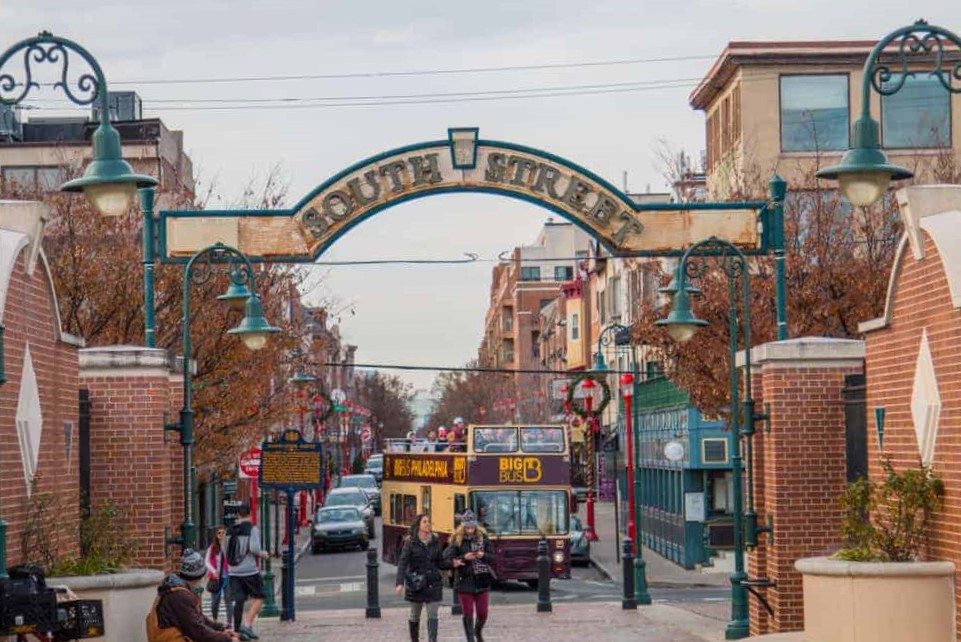In a recent Philadelphia Inquirer article, local business leaders discuss how Center City Philadelphia has nearly recovered to pre-pandemic levels of jobs and downtown foot traffic, although non-resident workers still haven’t fully returned physically to their Philly workplaces. In fact, according to a new report from the Center City District, the city could be on the verge of another “Rendell moment,” (recalling the city’s revival in the early 1990s).
However, business leaders are concerned that unless City Council addresses high wage taxes and the red tape of doing business here, the pace of recovery could stall. The article quotes Paul Levy, head of the Center City District, who discussed the new “State of Center City” report (available on the business advocacy group’s website centercityphila.org).
Certainly the pace of Philadelphia’s recovery has been swift. Venture capital deals soared from 2020 to 2021, rising from $3 billion to $7.7 billion, and the growth has helped move Philadelphia to the sixth largest metro area nationally.
“Philly is having another ‘Rendell moment,’ and we just need leaders to push for better wage tax policy and jobs,” says Robert Zuritsky (president and CEO of the Parkway Corp, a developer and parking lot company), who was referring to Philly’s 1992-2000 Mayor Ed Rendell. Rendell successfully balanced Philadelphia’s budget, reduced business and wage taxes, and improved services to neighborhoods.
The articles quotes some of the positives behind Philadelphia’s post-pandemic growth: 80% of retail and restaurant storefronts within Center City District boundaries are now open or have already obtained tenants through the first quarter of 2022. Additionally, the major performing arts and cultural institutions have fully reopened, enticing tourists back to the city. Retail and restaurant sales downtown rose throughout 2021, reaching 83% of the 2019 pre-pandemic level by the fourth quarter, while bars and restaurants have seen a steady increase since last year.
The article also points out that tourism and conventions also have rebounded, undoubtedly due to the fact that so much has reopened in the city, and that the average daily room rate in Center City hotels rose to $182 in 2021, from a low $156 experienced during the pandemic’s height in 2020 (2021 rates are about 10% below 2019 levels).
While shoppers and visitors reached 87% of pre-pandemic levels in April 2022, only 49% of nonresident workers have physically returned to their jobs downtown. While that growth still helped Philly outpace New York City in the job recovery rate, business leaders are concerned that growth might stall if nonresident workers don’t continue returning to their workplaces.
Hospitality’s recovery has been slow, but jobs are nearing pre-pandemic levels. About 80% of the city’s jobs lost from March to December 2020 in performing arts, spectator sports, museums and historic sites recovered by September 2021, the latest available.
Philly is building more apartments, fewer single-family homes
Another positive note for retailers and restaurants is that Philadelphia’s residential growth continues. By the end of 2021, there were more than 17,000 residential units under construction or permitted in Greater Center City, representing 50% of the citywide total in 6% of the city’s land area. Much of that construction has been in the Market East section of town, where Thomas Jefferson University and its hospital are the largest employer.
The educational attainment of Philadelphians has also been rising, with 31% of residents 16 or older in 2020 having achieved a bachelor’s degree or higher, according to the report. That’s up from 23% 10 years earlier and 18% in 2000. Meanwhile, the share of the city’s 16-and-older population with less than a high school diploma has fallen to 14%, down from 29% 20 years ago. The report also found that 105,000 students were enrolled in 14 higher education institutions in and around Center City in fall 2020, and said that of the 30,000 degrees granted by those schools in the year prior, the bulk were in STEM (28%), health fields (23%) and business (20%).
The Philadelphia Inquirer, Erin Arvedlund
